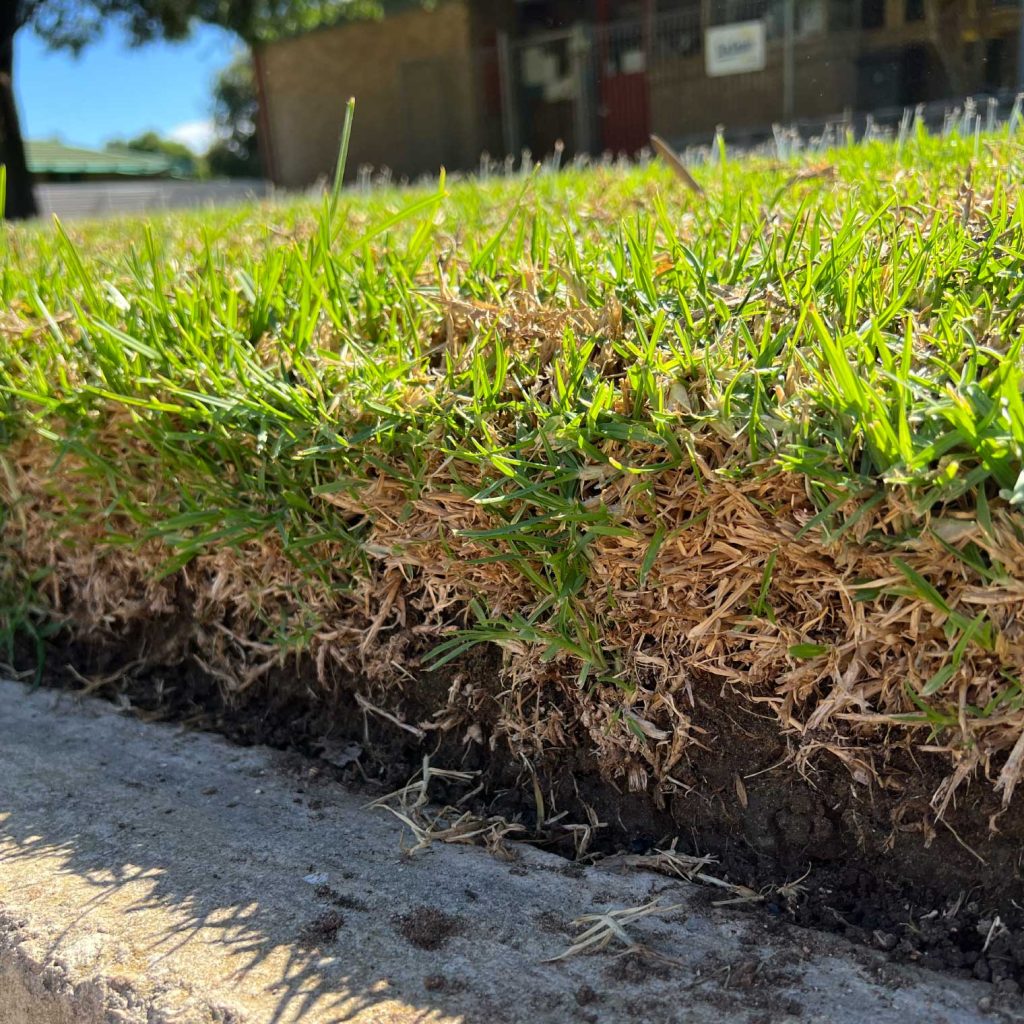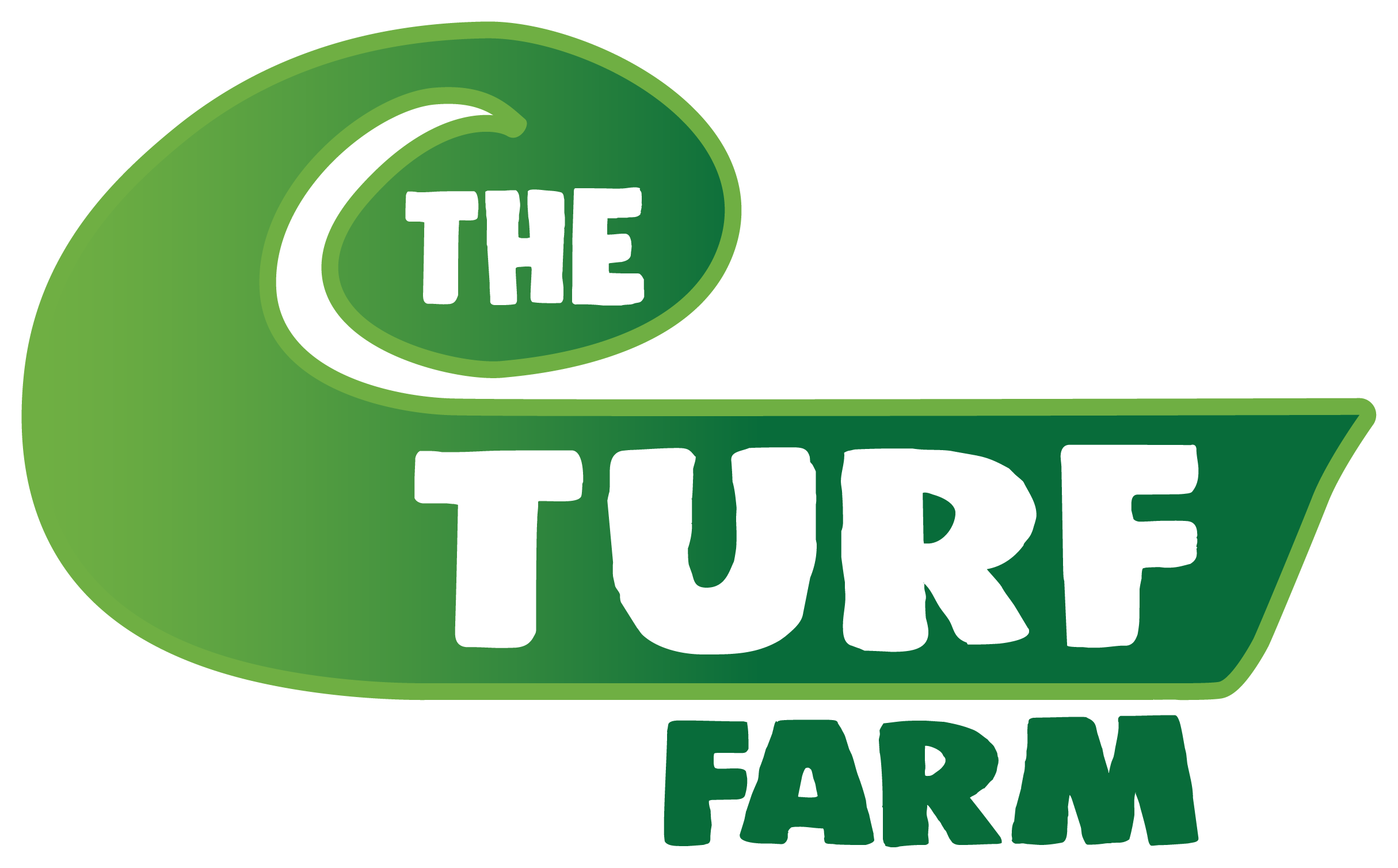We often get calls from worried lawn lovers about their ‘thick or spongy’ lawn. It’s a common lawn problem that is usually associated with a build up of something called thatch.
What is thatch?
Thatch is the build-up of dead organic matter, excessive roots and stems within the profile of your grass. This is a natural process caused by your lawn producing more organic matter than what can be broken down. Some turf varieties will thatch more than others and overtime thatch build-up can become quite unsightly.

Ideally, if your lawn is suffering from a build-up of thatch, you want to dethatch it. Dethatching will help to remove this layer so that air and nutrients are able to reach your soil base and can more effectively feed your lawn. Reducing thatch also prevents water log in your roots and allows proper drainage, helping to prevent the risk of fungal issues.
How do I dethatch my lawn?
There are a few different ways you can dethatch your lawn but our tried and tested method is with a simple low mow. Before dethatching, ensure you know the qualities of your lawn variety, some won’t respond as well to a low mow as others. Dethatching is not recommended for cool season varieties like RTF Tall Fescue.
Although you can hire or purchase specialised equipment such as a verticutter or power rake, we find a low mow to be an easier and more accessible option for most. Chances are, you already have all the tools you need…a mower (and possibly a large bin too!).
Mow low
To dethatch your lawn, grab your mower and reduce the height of the cutting blade right the way down. Mow your lawn low enough that you can reach into the thatch layer. For some lawn varieties such as kikuyu and couch, you can even scarify your lawn right down to the dirt. This is not suitable for Sir Walter DNA Certified as it grows runners above the ground and therefore needs some runners on top to regenerate from. If you have Sir Walter, mow low but not all the way to the soil.

A good time to dethatch your lawn is towards the end of spring when the lawn is establishing quickly and will have time to recover. If you attempt to dethatch your lawn too late into the growing season, your lawn won’t recover over winter. Plan ahead, there is a short window through spring and summer where the weather is consistent enough for your lawn to grow back after dethatching.
While you perform a de-thatch you can also think about other renovation jobs like aerating, topdressing and of course, your spring fertilise.
Have more questions about dethatching, spring renovation or anything lawn related? Check out our spring lawn care page or get in touch with us, we’d love to chat to you!






